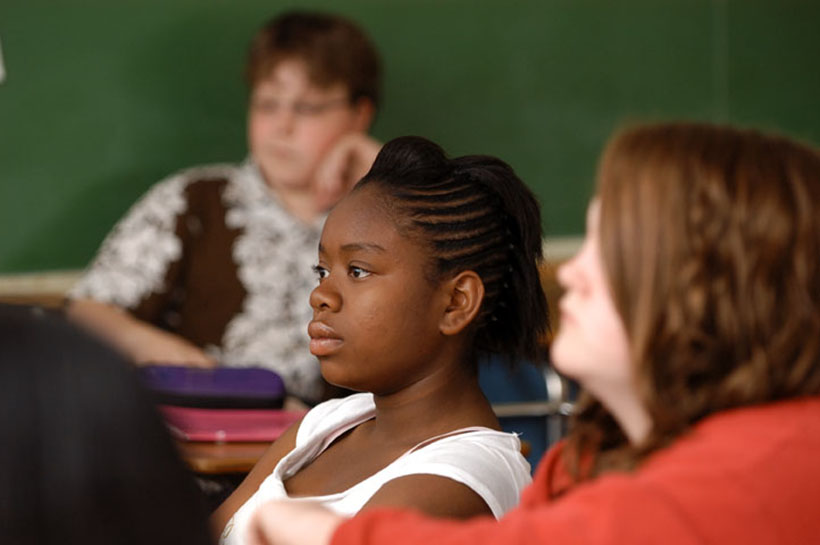This post was first published in 2015.
The following post is excerpted from Gholnecsar E. Muhammad’s February 2015 article “Searching for Full Vision: Writing Representations of African American Adolescent Girls” in the NCTE journal Research in the Teaching of English.
The article explores a qualitative case study Muhammed conducted to describe how eight African American adolescent girls represented themselves in their writings while participating in a four-week summer literacy collaborative.
“If educators can understand girls’ identities and ways to engage them in writing, this knowledge can help support them in crafting writing experiences in classrooms that not only build their skills but also help youth to make sense of who they are.”
Gholnescar E. Muhammad explains that the roots of her investigation into how to create such writing experiences come from her own experiences growing up: “My interest in African American girls stems from my community-engaged work as a middle school teacher. For five years, I led a girls’ organization focused on academic, physical, and overall wellness for adolescent girls. I soon discovered that the girls who participated had many hardships related to social injuries, pathologies, and identity—many of which I experienced as a teen. I wanted to discover if literacy practices could help girls mediate, resist, or negotiate self for protection and refuge. Since then, I have engaged girls in various collaboratives focused on literacy development.”
In the collaborative Muhammad describes in this article, “the participants in the study, the authors of the texts we read, and I were referred to as ‘Sister Authors’ . . . . I was purposely constructing a space where the girls and I could develop a collective identity as a collaborative, as well as our individual identities through our writings.”
Each lesson began with participants collectively reciting a preamble that they co-constructed during the first day of the literacy collaborative:
We, the Sister Authors, are here to encourage all our sisters to be brave, share our stories, and not to fear those without knowledge about us. Together we shall clear a path for those who come later. We will write to ignite a spark in our fellow sisters in order to bring unity among us. Our writing is to entice society with our minds. We write with intelligence, passion, and personality. Only we can tell our stories. We are smart and can strive to be anything we want, although society projects us as all the same. Today we will change the way we are defined. We will write to not only leave an impression on paper but also on society.
Muhammad says, “their preamble marked the power and purpose of their pens.”
In the collaborative, students “read a brief biography of the featured mentor author; read, interpreted, and discussed literature; and then wrote.”
The case study describes how Muhammad coded all the students’ writing to reveal “six representations of self, which included community, cultural, individual, intellectual, kinship, and sexual representations” that ran across the work. The article includes powerful excerpts of that writing from each of the representations and a final reflection on what is possible when this kind of pedagogy is employed.
“With each day of the collaborative, I learned more about the girls through their writings and interactions. I was reminded that researchers and educators must not get trapped in singular profiles of Black girlhood as seen publically in media, in literature, and within society. This was something that the girls resisted and wrote against . . . .
In order to get a fuller understanding of how girls make sense of their own lives, we need instructional practices and research that make their voices central and do not sacrifice opportunities for intellectual growth or for them to make sense of who they are.”
Gholnecsar E. Muhammad is an assistant professor at Georgia State University.

